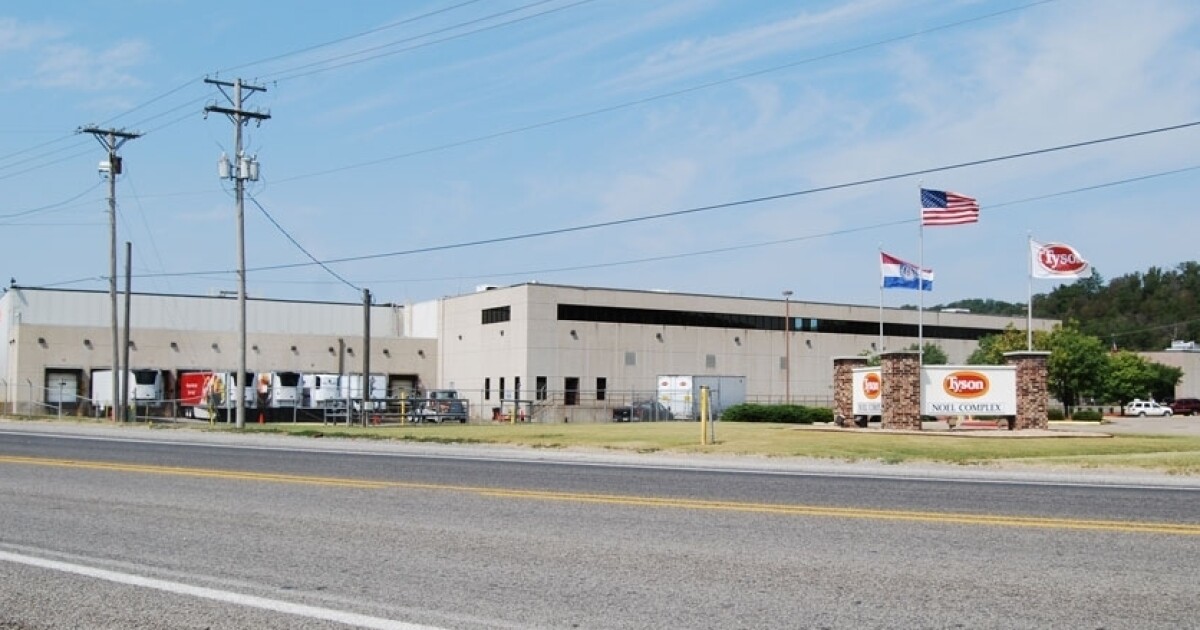Business
Illinois farmers get little traction for Right to Repair policy
This article first appeared in Investigate Midwest and is republished under a Creative Commons license.During the 2023 harvest season, one of Jake Lieb’s tractors quit working. A week later, his combine stopped working, too. Both were new — and he was locked out from making any repairs himself because of software restrictions embedded in the machines.Instead, a technician from John Deere was dispatched to diagnose and repair the problems. While waiting for the technician to come out, Lieb fired up a 20-year-old tractor he hadn’t used for harvesting in years. Crops are vulnerable to the weather, and had he not, Lieb could have lost at least a day of harvest. Some of the crop might have dropped to the ground, rendering it unsalvageable, potentially costing him thousands of dollars.“Meanwhile,” Lieb said, “we’ve got over a million dollars of equipment in the field, inoperable.”When the technician from John Deere arrived at his farm in central Illinois, it took about 30 minutes total to plug in a diagnostic tool, see which sensor was bad, unscrew it, replace it and close everything up in the combine.“If I knew what sensor was bad in that combine, I could have had it fixed in five minutes,” Lieb said. “But if you don’t have the software, it’s impossible to know what’s wrong.”For more than a decade, farmers like Lieb haven’t been able to fix their high-tech equipment. Until recently, manufacturer restrictions meant only company-authorized representatives could own and use diagnostic tools, and make fixes when needed.
Darrell Hoemann
/
Midwest Center for Investigative ReportingJake Lieb looks over his John Deere planter on March 18 at his farm near Monticello, Ill.
In March 2023, in an attempt to address farmers’ frustrations, the American Farm Bureau Federation signed a memorandum of understanding with John Deere and four other farm equipment manufacturers. The farm bureau called it a “private-sector solution to the right to repair issue.”In the agreement, Deere, Kubota, Case New Holland, AGCO, and CLAAS of America promised to give farmers and independent repair shops access to customer diagnostic tools. In exchange, the Farm Bureau agreed not to support any federal or state repair legislation.However, advocates for repair legislation say that the nonbinding agreement and the customer versions of tools provided by the companies fall short of needed protections that legislation would ensure. These same advocates are supporting bills across the country, including one introduced this year in the Illinois Senate.The Illinois bill (SB2669) proposes to establish an agricultural equipment bill of rights. It would require manufacturers to make software, firmware and all other tools needed to repair machines accessible to independent repair shops and owners throughout the state at a reasonable cost.The bill directly addresses the MOU, and says that agricultural equipment owners are entitled to any tools or software not covered by the MOU. The bill’s sponsor, Sen. Jil Tracy (R-Quincy), declined to comment after multiple attempts by email and in person to reach her. Deere and the other farm equipment manufacturers also did not return multiple requests for comment.The bill is languishing at the statehouse. According to a spokesperson from the Illinois Corn Growers Association in an email to Investigate Midwest, there’s no chance the bill will pass this year.The cost of repairThe demand for new tractors and combines ebbs and flows, but a consistent source of profit growth for John Deere is the sale of parts and services. Despite a 19% drop in sales of new ag equipment sales from between 2013 and 2019, supply chain disruptions and food system upheaval in 2020, and a month long labor strike of 10,000 workers across five states in 2021, Deere’s profits swelled the past three years, totaling a nearly 270% increase from 2020, according to the company’s SEC filings.According to Bloomberg, the sale of parts helped buoy the company’s portfolio — parts sales grew by 22% between 2013 to 2019.While Lieb’s fifth-generation family farm operates on annual tractor trade-ins so his machines stay on a warranty, which includes free parts and services, he’s in the minority. According to the U.S. Department of Agriculture, only 20% of farmers in the U.S. regularly buy new machines.The rest hold on to their equipment for longer periods of time or buy second-hand machines, which come with limited warranties or none at all, making repair restrictions more consequential.Equipment made before 2014 doesn’t have as much complicated software, and there are more repair workarounds. Still, the costs of repairing older machines add up.According to the Bureau of Labor Statistics, the cost of parts and labor, for ag equipment of all ages, has nearly doubled in the past two decades and spiked 41% since 2020. (Farm machinery is grouped together with construction and mining equipment by the bureau.)
In 2023, Kevin O’Reilly, then with the Public Interest Research Group, conducted a study of the cost of repairs directly tied to downtime and repair restrictions imposed by equipment manufacturers. He found that farmers lost an average of $3,348 per year to repair downtime.The study of 53 farmers in 14 states estimated that if every farmer in the country faced similar losses, repair restrictions placed on them would cost U.S. farmers more than $3 billion a year.“Even with our older machines — the stuff without software,” said one farmer in the study, “we were paying more because we were running up the hour counts. When stuff gets old, it breaks down more often.”Curbing pollution leads to digital transformationIn the mid-1990s, the Environmental Protection Agency introduced emissions standards for agriculture diesel equipment as part of a growing effort to curb air pollution. The agency gave manufacturers nearly two decades to meet certain benchmarks in a set of four tiers, each with increasingly stringent regulations. The final set of standards rolled out in 2014.To meet those emissions standards, complex computers were installed in agricultural machinery, which manage a wide range of functions and systems in the machines. This, in part, led to a technological revolution in farm equipment manufacturing, and drove the shift from mechanical operations to electronic controls.In addition to monitoring emissions output, combines and tractors are now loaded with digital sensors that measure everything from humidity in the air to the density of the soil on a centimeter-accurate grid, instantaneously sharing those metrics with the cloud via satellite and GPS imaging. Deere’s quest to create optimum efficiency is driving the company to develop a fully autonomous fleet by 2030.
“Having more choices in the marketplace and a more open repair market that drives competition makes things work better for farmers. What big companies are pushing against is more competition — they want less.”
Mike Stranz, vice president of advocacy at National Farmers Union
In reality, a faulty sensor in Lieb’s case caused his combine to shut down. And up until the MOU last year, farmers like him and independent repair technicians couldn’t access the necessary software tools to make their own repairs or clear a code once the repair was completed.But why was the MOU even necessary? Over the years, Deere has argued in court that a farmer may own a tractor, but they don’t own the software that makes it run.In a seeming win for farmers seeking the right to repair, the Library of Congress ruled in 2015 that repairing agricultural equipment is not an infringement on copyright. However, the ruling fell short of requiring equipment manufacturers to make their diagnostic tools publicly available.Customer tools leave much to be desiredWith nearly 6 million members nationally and 400,000 in Illinois, the American Farm Bureau Federation is the largest organization of farm and ranch families in the country and a powerful agriculture industry lobbying group. (The Census of Agriculture counts about 3 million farmers total in the U.S.; the farm bureau invites non-farmers to apply to be members.) The organization has drawn the ire of repair advocates over the memorandum of understanding.The 2023 MOU was brokered between the farm bureau, John Deere, CNH Industrial, CLAAS, AGCO, and Kubota. The companies agreed to release customer diagnostic tools, which range in annual subscriptions, for example, between $1,500 from CNH to $3,100 from John Deere.Repair advocates with the Public Interest Research Group, a federation of nonprofits focused on consumer protection issues, compared the John Deere customer tool to the authorized company tool, and said the customer version leaves much to be desired. That is why state or federal regulation is required, advocates argue.PIRG Director Nathan Proctor said he took it personally when he saw the differences. “It was almost like (the customer’s tool) is redacted or obfuscated,” he said.
Darrell Hoemann
/
Midwest Center for Investigative ReportingJake Lieb looks over his John Deere planter on March 18 at his farm near Monticello, Ill.
The tool provides a lot of information, Proctor said, but it’s inferior compared to what dealers have, and requires customers to go through extra steps in order to accurately diagnose issues and clear codes once the repair is complete. This leaves independent technicians and farmers at an unfair advantage in the market of equipment repair, he said.“Essentially, the dealers have a privileged level of access,” said O’Reilly, former right-to-repair campaign director for PIRG. “They can get through a digital door to press a button that you need to press in order to fix the thing, and farmers either don’t have access to that door, the door was locked, or they had to go through three, six, nine different doors just to get to the same place that the dealer was able to get to, right away.”PIRG focused their study solely on Deere tools because of the company’s dominance in the market. “When people think of agriculture or farming, John Deere is one of the first brands that comes to mind,” O’Reilly said. “They definitely have a level of dominance both as far as in the market but culturally as well.”Only three companies control the highly concentrated U.S. market for agricultural equipment — CNH, AGCO and Deere — and Deere commands nearly half of that. Globally, Deere controls a quarter of the market share of all ag equipment sales worldwide.An influential giant in agricultural equipmentThe first right-to-repair bill was introduced in Illinois in 2018. It would have applied to a broad category of electronic equipment, including electric wheelchairs, laptops, smart phones, and medical equipment, had it passed. After lining up nine bipartisan co-sponsors and hearing debate, it died on the House floor. It was opposed by numerous associations and large agribusinesses, including John Deere and CNH.Deere & Company has been headquartered in Moline, Illinois, for the last 176 years, growing into the agricultural giant it is today with more than 80,000 employees worldwide and profits topping $10 billion in 2023.As the nation’s leader in soybean crops and second in the nation for corn production, Illinois exports millions of bushels around the globe, generating billions of dollars of revenue. And when farmers profit, John Deere profits.Some of that money flows into the state capital. The John Deere Political Action Committee donated more money to Illinois politicians since 2017 than politicians in any other state by tens of thousands of dollars each year. In 2022, the most recent year of the most available comprehensive data, the John Deere PAC gave $183,500 total to 47 Illinois politicians, while the median donation for all other politicians in the country was only $15,000.The company’s rapid technological innovations over the past decade coincided with an aggressive merger and acquisition strategy, which the federal government has said erodes competition. Deere has acquired multiple machine learning and artificial intelligence companies over the last decade and recently announced a partnership with SpaceX, all but dissolving the categorical differences between Big Tech and Big Ag.As for its competitors, Deere’s net income surpasses its competition by the billions. The company made more in the first quarter of 2024, which ended Jan. 28, than AGCO and CLAAS combined for all of 2023.These trends worry elected officials in the White House and around the country. In 2021, President Biden issued an executive order promoting competition and targeting repair restrictions that violate anti-trust laws. The order was supported by the Federal Trade Commission, which enforces federal consumer protection laws. In 2023, Illinois Attorney General Kwame Raoul led a coalition of attorney generals around the country urging Congress to pass right-to-repair legislation, specifically for farm equipment. And 15 states are currently considering right-to-repair bills that cover agriculture equipment, after Colorado passed the first in the country in 2023.In the meantime, the Illinois farm bureau said it will work with the MOU.“The MOU led by AFBF a year ago was a solid step in the right direction for an individual to perform maintenance on their own equipment,” wrote DeAnne Bloomberg, Illinois Farm Bureau’s director of issue management, in a written statement to Investigate Midwest. “In the meantime, the Illinois Farm Bureau will honor the Memorandum of Understanding signed by AFBF.”
Why groups oppose legislationEquipment manufacturers and private business interest groups such as the Illinois Chamber of Commerce have spent the past seven years lobbying against proposed right-to-repair legislation in Illinois, according to witness slip records on the state’s General Assembly website.They’re concerned about safety and emissions tampering, whether intentional or accidental, according to those records.A spokesperson for the Association of Equipment Manufacturers said in a written statement to Investigate Midwest that current legislative proposals go further than what is safe and could “increase the likelihood of cybersecurity attacks on equipment…and leave equipment vulnerable to untrained or unauthorized parties looking to steal or use it for an unintended purpose.”Mark Denzler, president of the Illinois Manufacturers Association, said that he’s not opposed to farmers repairing their equipment, he’s opposed to modifications. “You can get in and either accidentally or intentionally, for example, change coding, and suddenly you’re emitting past what you’re supposed to.”Farmers, and the Environmental Protection Agency, which regulates emissions standards, say this isn’t the point of repair advocacy.The EPA sent a letter to the National Farmers Union in August 2023 stating that the Clean Air Act and the EPA’s policies of implementing regulations are “aligned in preventing tampering, not by limiting access to independent repair, but rather by enforcing the prohibition against tampering against any party that does so.”“We’re not looking to turn our tractors into hot rods and soup them up,” said Lieb, the central Illinois corn and soybean farmer. “We need them for longevity, and when you start turning up horsepower and messing with things that they’re not designed to do, inevitably, you’re going to shorten the lifespan.”
Darrell Hoemann
/
Midwest Center for Investigative ReportingJake Lieb with his John Deere equipment on March 18 at his farm near Monticello, Ill.
‘The people calling for change are farmers’Last October, members of the National Farmers Union, an organization representing 200,000 farmers and ranchers across the U.S., went to Capitol Hill to meet with lawmakers about the impact of what they say are monopolies in the ag sector.Mike Stranz, vice president of advocacy at National Farmers Union, said that passing right-to-repair legislation will bring more competition, openness and transparency to the market for farm equipment repair.“Having more choices in the marketplace and a more open repair market that drives competition makes things work better for farmers,” he said. “What big companies are pushing against is more competition — they want less.”Farmers aren’t the only ones who depend on John Deere. The state of Illinois has paid the company $42.8 million in contracts since 2005, according to state comptroller records. The state mostly depends on John Deere machines for lawn service, trail maintenance, highway and roadside mowing.All off-road diesel engine machines, such as construction equipment and forestry machines, have internal computers and repair restrictions similar to tractors and combines. However, the difference between a $500,000 John Deere combine and a $40,000 utility tractor for landscaping is that the software isn’t as integrated into the utility tractor and most repairs are still analog.Farmers are concerned with repair restrictions because of the differences in the distribution models. Farmers typically own their equipment, while construction companies generally rent equipment for the duration of a project. The overhead, the budget and the time scale of farming and construction also is different, said O’Reilly, formerly with the Public Interest Research Group.Ultimately, O’Reilly hopes that right-to-repair laws will pass across industries, including construction and forestry.“But right now,” he said, “the people calling for change are the farmers.”Investigate Midwest is an independent, nonprofit newsroom. Its mission is to serve the public interest by exposing dangerous and costly practices of influential agricultural corporations and institutions through in-depth and data-driven investigative journalism. Visit online at www.investigatemidwest.org.
Business
Tyson Foods releases hundreds of millions of pounds of pollution

Meat processing company Tyson Foods released at least 371.7 million pounds of pollution into U.S. waterways between 2018 and 2022, according to a report released this week from the Union of Concerned Scientists.It’s the first time Tyson’s individual impact on the environment has been examined in this way, said Omanjana Goswami, one of the study’s authors. She said one of the goals of this study was to help consumers understand how major food companies with deep market penetration affect the environment.“Companies like Tyson Foods have a massive hold on our farming system,” she said. “If you’ve bought chicken at the supermarket or if you’ve eaten nuggets at McDonalds, you’ve most likely been a consumer of Tyson Foods. It’s really hard to avoid.”The analysis examines publicly available data on discharges from Tyson’s plants that have a National Pollution Discharge Elimination System (NPDES) permit from the U.S. Environmental Protection Agency, Goswami said. It identifies 30 pollutants released including chloride, nitrogen, phosphorus and a handful of other metals.“There’s a long laundry list of pollutants that Tyson releases every year,” Goswami said.Of the 371.7 million pounds of pollutants released, the study finds nitrogen accounted for 34.2 million pounds and phosphorus accounted for 5.1 million pounds. Both of these nutrients can harm plant and animal life in waterways when found in excess.On top of that, the majority of the pollutants released by Tyson in the five years the study examines were in the Midwestern states of Nebraska, Illinois and Missouri, she said. It’s a part of the country that already has excessive nitrogen and phosphorus running off from farms.“You see a large part of the pollution is clustered around the Mississippi River Basin,” Goswami said. “Eventually, a lot of this flows into the Mississippi River, which then finds its way to the Gulf of Mexico, which then has this massive hypoxic dead zone.”The dead zone in the Gulf of Mexico has been a problem for decades. The overabundance of nutrients can starve aquatic life of oxygen, said Kelly McGinnis, executive director of the Mississippi River Network.“Fish and things that can easily swim away are able to,” she said. “Shrimp and other invertebrates often aren’t.”Upstream, nitrogen and phosphorus pollution can cause issues in local communities too, McGinnis said.“If you live in a community that is having excessive nutrients, then your wastewater treatment plant is going to be working harder to treat that water,” she said.Those who rely on well water may need to test it to ensure it’s safe to use, McGinnis said. Excessive nutrients in local waterways can also lead to harmful algal blooms, making them unsafe for recreation and even fatal for dogs, livestock and other animals, she added.Likely an undercountWhile the report from the Union of Concerned Scientists identified hundreds of millions of pounds of pollution by Tyson, it’s not a complete look at the whole meat industry, or even all of Tyson’s operations. Goswami explained that’s because they could not examine pollution data from smaller Tyson plants that don’t meet the threshold to require a NPDES permit from the EPA.“Which means what they are releasing is going on unchecked in terms of both quantity of pollutants as well as category and type of pollutants,” she said. “And we are not able to capture that data.”The EPA estimates about 300 of the 7,000 meat processing plants in the country need permits to discharge pollution, Goswami explained. She said because such a small number of plants are required to report, researchers are “looking at a scale of pollution whose ceiling we can’t quantify.”McGinnis noted the report only examines meat processing facilities, which are one part of the meat supply chain.“My mind could not help but make a connection to the concentrated animal feeding operations that are also operating in these same areas,” she said. “This report shows an astonishing impact on water quality by one company and it seems there’s so much deeper we can go.”A Tyson spokesperson said the company constantly monitors the wastewater coming from its facilities and works with federal and state regulators and local municipalities when planning and designing their discharge systems.“Tyson Food uses a robust management system to mitigate environmental risks and impact, and we strive to run our operations as responsible stewards of our natural resources,” the spokesperson said. “This report does not acknowledge our ongoing compliance with EPA regulations and certification by the Water Alliance for our strong water management practices.”The report does note the $2 million criminal fine Tyson paid in 2018 for violating the Clean Water Act in Missouri and the $3 million settlement in 2021 over illegal wastewater discharge that killed hundreds of thousands of fish in Alabama. Tyson’s annual revenue in 2023 was more than $50 billion.“When you’re able to have that kind of wealth concentrated in a company, they are not deterred by the fines that the current structure of the systems have in place,” McGinnis said. “We know there’s other large scale companies like Tyson.”The EPA is updating its wastewater pollution regulations for meat processing industries, particularly setting new rules for nitrogen and phosphorus, Goswami said.“We’ve known, historically and based on the agenda that these companies have of prioritizing profit, that they’re most likely going to push back on regulations like this,” she said.McGinnis agrees there needs to be more regulations in place, but also argues large companies like Tyson need to shift how they consider and measure success.“Climate change is only going to exacerbate the impacts of water pollution,” she said. “I think that means for a company like Tyson, are there other metrics of successful business besides just your profits?”
Business
A Belleville duplex is falling apart after neglect and squatter
Editor’s note: This story was originally published in the Belleville News-Democrat.Half of a west Belleville duplex that’s falling into disrepair has become a headache for city officials, police, neighbors and an alderwoman who is “frustrated beyond belief.”The man who owned and lived in the unit died five years ago, apparently with no will. Since that time, it’s been tied up in bureaucracy with a reverse-mortgage lender and the U.S. Department of Housing and Urban Development (HUD), which essentially inherited the federally-insured loan and its property lien.To make matters worse, a squatter took possession early last year and refuses to leave, and police can’t force entry without a court-ordered eviction, according to city officials.The woman has removed HUD-ordered locks on doors and replaced them with her own and repeatedly signed up for utilities using fake names, said Scott Tyler, the city’s director of health, housing and building.“When I asked HUD what their next step is, they said they were going to sell it, and whoever buys it is going to be responsible for getting the squatter out of there,” he said.“I said, ‘Do you let these people know that? They’re buying a piece of property … Do they understand that there’s a squatter in there and that they have to deal with it?’ It’s crazy.”As of last week, the front window featured dueling messages, including a “No Trespassing” sign posted by the squatter and a city notice stating that the unit is “condemned as unsafe for human occupancy” due to the water being turned off. No one answered a knock on the door by a BND reporter.The other half of the duplex has a different owner who’s been renting it out, but the tenant left about a month ago, neighbors say.
Teri Maddox
/
Belleville News-DemocratShingles are falling off the roof at 7312 Foley Drive in Belleville, where half of a duplex has been vacant for five years.
Enlisting congressional helpIn January, the city and a nonprofit organization called West End Redevelopment Corp. asked for help with the problem unit at 7312 Foley Drive from U.S. Rep. Nikki Budzinski (D-13th District in Illinois). The organization even offered to buy it.According to Budzinski’s chief of staff, John Lee, her caseworkers reached out to HUD representatives, who told them that squatting is a “local law-enforcement issue” and the agency is planning to sell the loan this year to an eligible bidder as part of an “asset sale.”“The new servicer will move forward with foreclosure to get title to the property, and then they can sell it,” wrote HUD representative Kimberly Danna in an email to a Budzinski caseworker.Under Illinois law, it could take several more months for a new owner to evict the squatter.In the meantime, the unit continues to deteriorate. Shingles are falling from the roof, black mold is growing on exterior siding, paint is peeling off the garage door and trash is strewn in the yard.Ward 8 Alderwoman Kara Osthoff didn’t respond to BND requests for comment. But she expressed concern in a December 2023 email obtained through a Freedom of Information Act request.“The perception that the west end of Belleville in particular is ‘going downhill’ is something I know you have all heard from the community,” Osthoff wrote to Tyler, Mayor Patty Gregory, Police Chief Matt Eiskant, Sgt. Sam Parsons and city attorneys Garrett Hoerner and Lloyd Cueto.“I know that we have many many issues facing us, but if we don’t start addressing these things with more urgency and immediacy, I don’t know what is going to become of the aging house stock we have on this side of town.”Assistant Police Chief Mark Heffernan, spokesman for Belleville Police Department, declined to be interviewed this month about the Foley Drive unit or squatting in general.
Teri Maddox
/
Belleville News-DemocratTrash is stacked next to the front door at 7312 Foley Drive in Belleville, where a squatter installed her own door knob and dead-bolt lock.
Built in the 1980sKent Gardner, who owned and lived in the unit at 7312 Foley Drive, died in 2019 at age 87. Before retirement, the former East St. Louis resident had worked as a U.S. government energy consultant in California and elsewhere for decades, according to his obituary.St. Clair County records show Gardner bought the unit in the 1980s, when it was part of a new complex of four duplexes, also known as villas, at Foley Drive and South 74th Street. He’s still listed as the property owner.Gardner took out a $183,000 home-equity conversion mortgage in 2011, the records show. It was part of a Federal Housing Administration reverse-mortgage loan program for senior citizens who go through FHA-approved lenders.“(The program) enables you to withdraw a portion of your home’s equity to use for home maintenance, repairs, or general living expenses,” HUD’s website explains.Today, the Foley Drive unit is assessed at $44,177. That’s one-third of its market value of $132,531, although other units in the same complex have sold for significantly less in recent years.Kent Gardner’s wife, Patty, died in 2011, his obituary states. Son Scott Gardner couldn’t be reached for comment on this story. Daughter Stacey Gardner declined to comment.In 2022, Belleville resident Chris “Lumpy” Landrum took an interest in the vacant unit, thinking it would be a nice place to live and knowing the developer had a reputation for top-quality construction.The unit has a fireplace, brick facade in front, composite siding, a shake-shingle roof, wooded back yard, privacy fence and vibrant Japanese maple in front.“I was hoping to buy it in in a short sale,” Landrum said, adding that he grew up on the west end and would take better care of the property than a real-estate investor “just riding a hot market.”But Landrum said he faced hurdle after hurdle getting information from HUD. Then in early 2023, he began seeing the squatter, who moved in despite notices posted on windows by Guardian Asset Management, an agency contractor, that prohibited occupancy.The woman stayed regularly at first then left for weeks at a time, Landrum said. He described the unit’s interior as going from clean and well-maintained to dirty and full of trash. Its windows are now covered with paper.St. Clair County records show that the federal government has paid taxes on the property, but a private investor bought its delinquent-tax bill for 2022, so the party that redeems it will have to pay interest.
This drone photo shows four duplexes, also known as villas, with eight units that are part of a complex on Foley Drive in Belleville.
Different kind of squattingBelleville has had problems in the past with squatters in chronically-derelict buildings, particularly in its historic downtown. City officials have determined that many are living on the street due to drug addiction or mental illness.However, the situation at 7312 Foley Drive is different. The unit looked to be in good shape when it was first vacated, Landrum said. Reports by police and city officials obtained through the Freedom of Information Act request indicate the squatter has a vehicle and small children.“There are a lot of professional squatters out there,” Landrum said. “They just move from place to place to place and never have to pay a dime of rent or living expenses. They’re not stupid.”Tyler, the housing director, told the BND he went to the Foley Drive unit in February 2023, made contact with the squatter and notified her that she couldn’t legally live there without an occupancy permit.The woman reportedly told Tyler she was a relative and caregiver for the deceased owner and promised she would go to the housing office to get a permit the next day, which didn’t happen, according to police reports and an email from Tyler to Chief Eiskant.“Tyler then made contact with (the deceased owner’s) daughter, who said that she did not know this woman and had no idea why she was living in his house,” one police report stated.Officers went to the unit in early March to issue the woman a citation for occupancy violations and reported that she opened the door but then closed it, purportedly to call Tyler, and never came back.Around the same time, Tyler sent an email to Hoerner and Cueto, the city attorneys, asking what could be done to stop utility companies from turning on power and water for properties without occupancy permits.“This is even happening at vacant houses where the person has no right to even be in the property and is squatting,” he wrote. “We have an ordinance on the books that says it is required. Is this not enforceable? Because it is sure making it very easy to avoid inspections or even squat in homes.”Osthoff also weighed in on the issue in her December 2023 email, stating that the idea of a squatter getting utilities without an occupancy permit, much less legal tenancy, is “ludicrous.”
Teri Maddox
/
Belleville News-DemocratBlack mold is growing on siding at 7312 Foley Drive in Belleville, where half of a duplex has been vacant for five years.
Patience wearing thinBy August 2023, it seemed that city patience was wearing thin with the situation at 7312 Foley Drive.Cliff Cross, director of economic development, planning and zoning, sent emails to two HUD representatives, advising that city officials planned to contact Budzinski’s office due to the agency’s “lax approach” to the problem.“(The unit) clearly has not been monitored, addressed or secured by HUD or their affiliated property management agency,” Cross wrote to representative John Nguyen on Aug. 30, 2023.HUD representative Michael Pompa later conducted an inspection of the unit and determined it to be vacant, according to emails between him and Tyler. He sent a contractor to install new locks and post new notices prohibiting occupancy in early December 2023.However, Tyler stopped by on Dec. 20, 2023, and discovered that the squatter had returned, replaced the locks with her own and removed the notices.Illinois eviction laws are designed to protect tenants and others from being put out on the street at the whim of property owners, according to Noah Halpern, an attorney who specializes in housing issues with Land of Lincoln Legal Aid in East St. Louis.“Whoever wants them out has to demonstrate that they’re the ones who have the superior right to possession,” he said.The way property owners demonstrate that is to go through an eviction process in court, even when dealing with squatters, who may claim that their histories or relationships give them possession rights.Ashlee Strong, a HUD spokeswoman in its Chicago regional office, declined to make anyone available for an interview regarding the Foley Drive unit. In an emailed statement, she reiterated the agency’s plan for an asset sale and addressed the squatter issue.“Recently, the property was ‘adversely occupied’ with an unknown occupant,” the statement read. “The city has issued a notice to the ‘squatter,’ and HUD is actively engaged in the process of resecuring the property.”
Teri Maddox
/
Belleville News-DemocratA squatter put up a “No Trespassing” sign in the front window of a duplex unit at 7312 Foley Drive in Belleville.
Non-profit lawsuitNeighbors at the Foley Drive complex have been wondering for months what was going on at 7312.Some expressed concern about trash around the unit. Others mentioned that the intermittent female occupant has small children who play in the parking lot without adult supervision.“I wish someone would do something,” said neighbor Julie Barnett. “It’s an eyesore. That’s the first thing I see when I pull in.”West End Redevelopment Corp., which buys and renovates derelict buildings in west Belleville, may be the best hope for saving the Foley Drive unit from further deterioration.The nonprofit organization is trying to take possession under the Illinois Abandoned Housing Rehabilitation Act. The law allows nonprofits to file lawsuits and get circuit courts to force owners of “nuisance” properties to bring them into compliance with local codes.If owners decline, there’s a path for the organizations to take ownership. If the owners can’t be found, organizations can take temporary possession, do the renovations themselves and get reimbursed.West End Redevelopment Corp. filed its “abatement of nuisance” case on April 1 in St. Clair County Circuit Court.“It’s a dilapidated property, and it’s within our corridor,” said Board President Donna Veile. “A lot of people drive by that complex on Foley Drive. It’s very visible.”The organization can’t participate in HUD asset sales because it isn’t a eligible bidder with at least $3 million in equity, according to Veile. Landrum isn’t eligible, either.Landrum praised city officials and West End Redevelopment Corp. for monitoring the Foley Drive situation instead of letting it fall through the cracks. He blames the “mess” on the federal government.“They’re going to package a couple hundred of those (loans) and sell them to some company with millions of dollars, and regular people can’t even bid on them,” he said. “It’s so unfair.”Teri Maddox is a reporter with the Belleville News-Democrat, a news partner of St. Louis Public Radio.
Business
Schwan’s name change and layoffs challenge its legacy

Mary Bartels looks forward to seeing the yellow Schwan’s truck pull up outside her apartment building in Vermillion, South Dakota. She’s been getting frozen food deliveries – including ice cream, meat and meals — for nearly 60 years.The company’s customer service is at the heart of her loyalty.“It’s always been just unbelievable,” she said. “I trust them so much, I would hide a key outside for them if I wasn’t going to be home.”On this day, driver Nate O’Grady rings the doorbell and takes a seat at Mary’s kitchen table. As a child, the yellow trucks came to his grandparent’s house. Now he said getting to know the customers, kids and pets along his route is a highlight of his day.“You have much more connections with customers than with Amazon, where they ring your doorbell and leave. We have time to sit and talk with people,” O’Grady said.He knows what customers will order before they ask – for Mary, every order needs a box of peanut butter cup ice cream minis.
Elizabeth Rembert
/
Harvest Public MediaMary Bartels keeps her freezer stocked with peanut butter cup ice cream treats from Yelloh. She’s been ordering ice cream and other frozen food from Yelloh – previously Schwan’s – for nearly 60 years.
Schwan’s started in 1952, when a 23-year-old Marvin Schwan went door-to-door delivering 14 gallons of his family’s ice cream to homes in rural western Minnesota. Over the next 70 years, the company became beloved for its yellow trucks, friendly delivery people and frozen food.In 2018, South Korean food manufacturer CJ CheilJedang agreed to pay $1.8 billion for a majority stake in Schwan’s. The Schwan family spun off the home-delivery business and kept 100% ownership.Schwan’s Home Delivery changed its name to Yelloh in 2022 in an effort to appeal to a broader customer base in what is now a crowded food delivery space. The following year it cut 750 employees and closed around 90 delivery centers.Today, customers in all but 18 states rely on UPS to deliver their Yelloh frozen products, instead of the familiar yellow trucks.
Yelloh is contending with a much more competitive market. Danny Edsall – a co-leader for Deloitte’s global grocery practice – said the food space has gone through several phases of evolution in the last few decades.“Everyone got this idea that grocery is an incredibly important category,” he said. “And so there are a whole new wave of entrants chasing the grocery dollar.”Yelloh’s major competition was once local, family-owned markets. Now it’s facing big box stores like Walmart, Target and Costco. Amazon, Grubhub and others will even bring your groceries straight to your door.“I think we’re right in the heat of that battle, it’s yet to be decided who wins,” Edsall said. “The people who are doing it right are the ones who genuinely try and get to know their customer and tailor services to meet their customer’s needs.”It’s not unusual for a legacy company like Yelloh to shift strategies as it reckons with a more crowded market and changing customer preferences, Edsall said.“The art of retail is to reinvent yourself for a new consumer,” he said. “You always have to reinvent your brand while staying relevant. The companies who pull it off are the ones still around in 100 years.”
The company’s new name draws on its yellow trucks. “It’s not easy to build a new brand,” CEO Santana said. “But the food and the service is the same, and we will reinforce the new name with our customer base and attract new customers.”
From Schwan’s to YellohO’Grady, the delivery driver, said he’s seeing the new brand name Yelloh slowly catch on with his customers – but not with Mary.“They changed the name of it?” she asked O’Grady. “I didn’t know that; when did they do that?”The new name is inspired by customers’ memories of the yellow trucks, according to CEO Bernardo Santana.“It’s really common for us to hear ‘I remember when I was a child in my grandma’s house, seeing the yellow truck with the ice cream,’” he said. “The strongest brand we have is our yellow truck, so we wanted to bring back and keep this connection with our customers.”But Akshay Rao, a marketing professor at the University of Minnesota, is concerned that Yelloh’s new name moves away from a 70-year-old brand and confuses its devoted customers.“They may think ‘Who are these people? Are they the same friendly people with my ice cream?’” he said. “So Schwan’s had a monopoly that it has said, to the best of my understanding, goodbye to.”Rao said he hasn’t seen the company’s research, but he suspects Yelloh’s new rebranding and cuts are part of a strategic shift, emphasizing costs rather than customers. He said only time will tell if the move is successful, but he’s skeptical.“Schwan’s had an intimate relationship with its customers,” he said. “It’s now stepping back from that relationship, and customers are going to start looking at other options.”Deb Kuwamoto is one of those customers. The Lincoln, Nebraska resident can no longer receive deliveries straight from a Yelloh truck. She loved chatting with the delivery men and can name all her drivers going back 10 years.Now, Kuwamoto said she’ll just go to the grocery store instead of ordering from UPS.“It makes me a little sad,” she said. “I think it’s the end of an era. I miss the drivers.”
Marvin Schwan stands by the original branded truck in this picture from the 1950s. The Schwan’s company grew out of a drive on March 18, 1952, when Schwan packed a Dodge panel van with ice cream and delivered the tubs to families in rural Minnesota.
And she’s not fond of the new name. Kuwamoto said ordering from Schwan’s felt like stepping back into her childhood in rural Nebraska.“It’s really kind of ironic because Schwan’s was kind of like the first grocery delivery,” she said. “And now everybody has caught up to them.”Yelloh CEO Santana said customers are still the company’s priority, even as it scales back its delivery footprint.“We are trying to deliver for customers in an efficient way and keep up with all the changes in logistics. We didn’t have the internet when Schwan’s started,” he said. “And there’s all the changes in the market environment — 20 years ago, there was no Amazon. Now it’s this stronghold.”Plus, Santana said, some customers prefer a quick drop off over small talk with a driver.“Some people just ask, ‘Leave my product in a bag outside the door,’ and then others are happy to chat with our drivers,” he said. “It will take time, but we are building a new brand that can attract all of the customers we can get.”
Mary and Fritz Bartels celebrate their 40th anniversary in 1993 with their nine kids, grandchildren and Schwan’s ice cream. One of their daughters flagged down a driver and asked him to come to the celebration, saying, “My folks love Schwan’s and have ordered for years and years. Can you surprise them with a visit?”
60 years of Schwan’sBack in Mary’s apartment, she remembers when she started ordering from the company nearly six decades ago. Her nine kids would rush up the farmhouse driveway to meet the delivery man and climb all over his yellow truck.“They’d all come in with an ice cream bar or something. And now I realize he was giving those to the kids out of his pocket,” Mary said, “because I wasn’t paying for them.”At one point she was ordering to feed a family of 11, and she kept ordering from Schwan’s through her kids leaving for college, moving into town from the farm and her husband’s death.As she sits in her chair with her memories, driver Nate O’Grady checks her freezer for what she needs, grabs the peanut butter ice cream cups, fantail shrimp and chicken pot pies from his truck and packs them onto the freezer shelves. She’s done her grocery shopping without standing up.O’Grady tells her goodbye and climbs into his yellow truck idling outside of her apartment – still stamped with the Schwan’s logo.Editor’s note: Mary Bartels is the mother of the author’s stepdad.This story was produced in partnership with Harvest Public Media, a collaboration of public media newsrooms in the Midwest. It reports on food systems, agriculture and rural issues.
-

 Entertainment1 year ago
Entertainment1 year agoSt.Louis Man Sounds Just Like Whitley Hewsten, Plans on Performing At The Shayfitz Arena.
-

 Business1 year ago
Business1 year agoWe Live Here Auténtico! | The Hispanic Chamber | Community and Connection Central
-
Board Bills1 year ago
2022-2023 Board Bill 189 — Public Works and Improvement Program at the Airport
-

 Local News1 year ago
Local News1 year agoVIDEO: St. Louis Visitor Has Meltdown on TikTok Over Gunshots
-

 News1 year ago
News1 year agoTed Lasso-inspired pop-up bar now open in St. Louis
-

 Board Bills1 year ago
Board Bills1 year ago2022-2023 Board Bill 165 — Jefferson Arms Community Improvement District
-
Board Bills1 year ago
2022-2023 Board Bill 183 — Amending Ordinance Number 62885 known as the Capital Improvements Sales Tax
-
Board Bills1 year ago
2022-2023 Board Bill 180 — Right to Counsel for Tenants Facing Eviction




